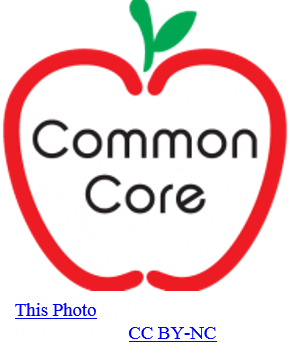 It’s been eight years since the Common Core State Standards were unveiled and states began adopting them for use in their evaluation programs. The firestorm of controversy which initially greeted their introduction into American education from both sides of the political aisle seems to have died down somewhat and presently the Common Core appears to have been accepted as a part of the landscape in most of the nation, even as a handful of states that have not adopted it have established similar sets of academic standards. Thus, the efforts of politicians, corporate executives, and educational bureaucrats over the past three decades have borne fruit. But I would like to suggest that there is a great deal about the CCSS initiative that is rotten to the core. Here are 12 reasons I believe the Common Core is bad for America’s schools.
It’s been eight years since the Common Core State Standards were unveiled and states began adopting them for use in their evaluation programs. The firestorm of controversy which initially greeted their introduction into American education from both sides of the political aisle seems to have died down somewhat and presently the Common Core appears to have been accepted as a part of the landscape in most of the nation, even as a handful of states that have not adopted it have established similar sets of academic standards. Thus, the efforts of politicians, corporate executives, and educational bureaucrats over the past three decades have borne fruit. But I would like to suggest that there is a great deal about the CCSS initiative that is rotten to the core. Here are 12 reasons I believe the Common Core is bad for America’s schools.
- It homogenizes learning. By adopting a uniform set of standards, states are essentially establishing a ”one-size-fits-all” approach to learning. Any educator worth her salt knows that students learn in different ways and that education needs to fit the needs of the student, not the reverse. It was Ralph Waldo Emerson who once wrote about ”a foolish consistency, [which is] the hobgoblin of little minds.” The Common Core is all about foolish consistency and runs a super-freeway through all the little hills and dales of student individuality.
- It represents a top-down approach to education reform. While supporters proclaim that the Common Core is a set of standards, not a national curriculum, seasoned educators know otherwise. Peter W. Wood, president of the National Association of Scholars writes that ‘’[the Common Core] is, in fact, very much a curriculum. The sneakiness in this case is . . . aimed at getting around legal barriers that prohibit federal efforts to establish curricula, but the sneakiness is also aimed at diverting teachers and the public from the truth . . . The Common Core standards are finely detailed, grade-by-grade specifications for what should be taught, how it should be taught and when it should be taught.’’ Top-down governance is most dramatically associated with the colossal failures of the Soviet and Red Chinese economies in the 20th century. On a far smaller scale we can see the same thing reflected in this government legislated top-down approach to how we educate our children (see Lawrence Baine’s article ”Stalinizing American Education,” published originally in the Teachers College Record in 2011)..
- It focuses too much attention on skills (when it should be focused on content): Education is supposed to be about passing down a nation’s culture to the new generation. Ultimately, education should be about introducing learners to the amazing world around them. What does one make of, thus, a standard like the following: ”Determine the main idea of a text; recount the key details and explain how they support the main idea.” (ELA Literacy, RI 3.2). What does this have to do with the solar system, the lives of cells, George Washington, or the Grapes of Wrath? The Common Core draws teachers away from the good stuff, the learning material that is intrinsically interesting and worthwhile to impart to young minds, and instead puts the emphasis on artificial learning skills.
- It encourages the fragmentation of the learning process. Children are best taught initially via ”wholes” not ”parts.” Students need to understand the why and wherefore of a topic before delving into the intricate structure of a learning topic. The philosopher Alfred North Whitehead wrote in his book ”The Aims of Education” that students must first learn something through the stage of ”romance” where topics are made fascinating, so that they can then move on to the next stage of ”precision.” The Common Core skips this essential first stage of learning and takes the learning process itself and slices it into hundreds of tiny fragments that in and of themselves have little to entice young minds.
- It represents a heavily ”elitist” approach to learning. The architect of the Common Core, David Coleman, was a Yale graduate, a Rhodes Scholar, and a student in classical philosophy at Cambridge University. He has effectively imported his elitist training by imposing such so-called innovations as ”close reading” on the English/Language Arts Standards. Close reading is essentially a distillation of a school of literary criticism called the New Criticism, a method popular at Yale University in the 1950’s. It places a primacy on sticking to the text of a book and not giving credence to an author’s background, the historical period in which it was written, or the personal ideas and feelings of students. Why Coleman’s personal prejudices and preferences should serve to drive the education of millions of students is an unanswered question.
- It is biased in favor of non-fiction reading as opposed to fictional texts. Again, because of Coleman’s own biases, there is an emphasis in the Common Core on ”informational texts” rather than reading and/or writing good fiction. This emphasis undermines the imagination of the student. Referring to students’ writing from personal experience, Coleman has famously stated: ”no one gives a shit what you think or feel” effectively negating the importance of the subjective self, a particularly devastating bias that hits hardest during the teen years when students are busy building a sense of identity and need learning experiences that fuel that project.
- It fails to provide flexibility for students in special education. With its plethora of skills and standards, the Common Core doesn’t make provision for the fact that many students experience a level of difficulty with literacy and numeracy that makes it all but impossible for many of them to meet grade-level standards. While the Common Core officials have distributed circulars specifying that certain accommodations can be made in the way that standards are taught (including the use of Universal Design for Learning tools), little leeway is given for the actual taking of the tests. In New York state, according to one report, only 7 percent of New York City students with disabilities scored “proficient” or better in English and 12 percent in math. The problem here is not just with students with special needs, but represents a failure of flexibility for all students.
- It encourages teachers to teach to the test. Increasingly, teachers are being held accountable for the test results of their students. In many cases, teachers are being evaluated partially on the basis of their students’ performance on standardized tests, which focus on Common Core skills. With their salaries and jobs on the line, many teachers play it safe by drilling students during instruction time on items that are likely to be found on the final tests. This test preparation takes vital time away from real learning and teaching, and sends a message to students that knowledge is important only in so far as it increases the chances of doing well on a test.
- It puts pressure on teachers to teach in developmentally inappropriate ways, especially during the early years. By focusing on grade-level skills that are highly academic in nature, the Common Core puts pressure on teachers at the early childhood and primary levels to teach using paper-and-pencil methods rather than using the rich exploratory experiential learning approaches that are developmentally appropriate for children from preschool to third grade. This failure to address developmental needs can have serious consequences for children’s social, emotional, creative, and cognitive functioning.
- It discriminates against students in low socio-economic areas of the country. The inequities that exist in this country with regard to people of color and other minority groups (including students speaking another language), mean that these students won’t receive the same quality teaching, use the same learning-rich resources, or have access to the same standards-based learning experiences as kids from rich suburban areas of the country. The Common Core State Standards establishes a high bar for America’s students, but it doesn’t provide teachers and schools with the financial support necessary to help millions of students achieve at that level.
- Very few experienced teachers who’ve taught in the trenches were consulted in establishing these standards. The Common Core has emerged as a result of the efforts of primarily non-educators (politicians and corporate executives) or educators who are out of touch with American schoolchildren’s real needs. The educational ”summits” that led to a standard-based curriculum often included no educators at all. As noted above, the architect of the Common Core was a Rhodes Scholar who never taught schoolkids, and Jason Zimba, the architect of the math section of the Common Core is likewise a Rhodes Scholar with no experience teaching elementary school students.
- It encourages a bureaucratic attitude toward learning and teaching. With a Dewey Decimal System-like approach to learning (e.g. ’ELA.W.11.12.3b – Use narrative techniques such as dialogue, pacing, description, reflection, and multiple plot lines to develop experiences, events, and/or characters,’’) the Common Core appeals mostly to bureaucrats who are less interested in facilitating rich learning experiences in the classroom, and more interested in tracking compliance of students using this Byzantine set of codes as a Procrustean bed within which to confine the bright spark of genius that is every student’s birthright.
Interested in the ideas discussed in this article? Then order Thomas Armstrong’s new book: If Einstein Ran the Schools: Revitalizing U.S. Education
This article was brought to you by Thomas Armstrong, Ph.D. and www.institute4learning.com.
Follow me on Twitter: @Dr_Armstrong






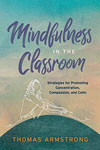
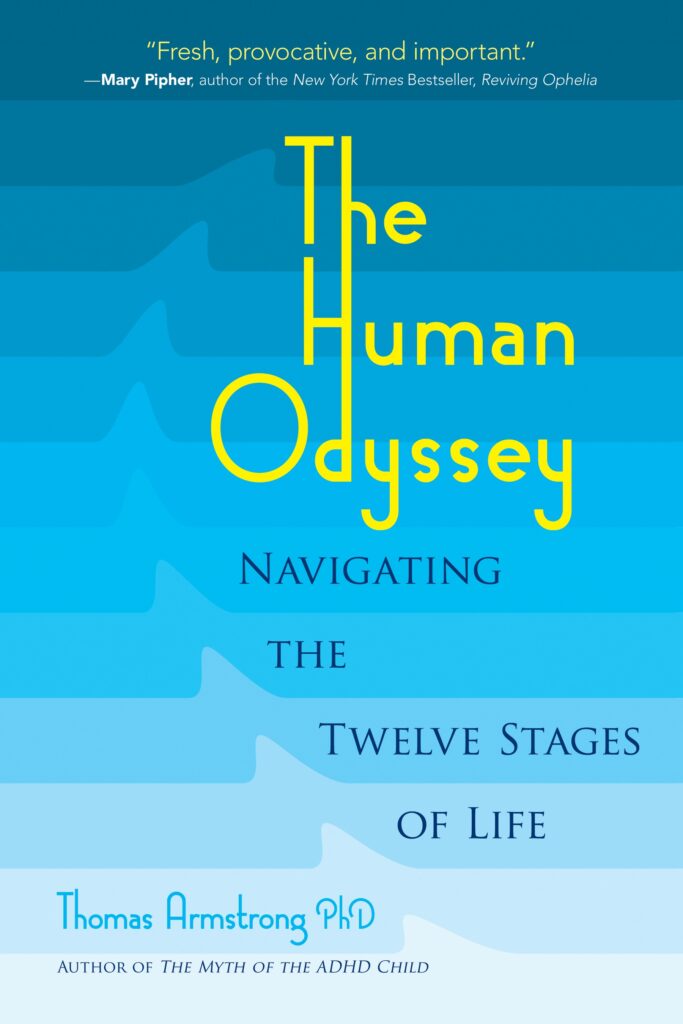
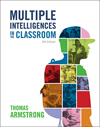
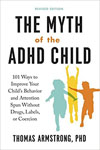





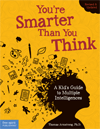




My daughter, who earned mostly A’s and B’s for the last three years of her education, and who loved math, just entered 4th grade this year. She doesn’t enjoy math anymore and her test scores went from a B to a C to a D. Trying to help her with what I thought was basic math (multiplication and division), has proven difficult.
Instead of teaching her how to multiply, I am finding myself learning the partial product strategy, the compensation method, and the “box” method (or Grid Method, or the Area Model). She knows how to multiply and divide, yet is almost failing at 4th grade math because of all these strategies teaching her how to think in an abstract way. Furthermore, these strategies take longer to derive at the answer.
For example:
42
×13
______
In regular math, we say 4×3=12
In partial product, we say the 4 is in the ten’s place, so 40×3= well, 4×3=12, then add the zero, well it’s 120.
In regular math, we say 4×1=4
In partial product, we now say both the 4 and the 1 are in the ten’s place, so 40×10= well 4×1=4, then there’s two 0’s so it’s 400.
Is it faster than regular math, no. Is it easier to understand than regular math? Maybe, depends on the person, but man is it long-winded and kids with any neurodevelopment issues are going to lose interest quickly.
I also noticed there is a huge emphasis in language arts to be able to pick out facts from a non-fiction (only) piece of writing. Gone is the enjoyment of understanding and enjoying what she reads in class, let alone the motivation to write anything fiction for herself.
My 9 year-old-daughter asked me to homeschool her recently. Administrators, I’d say you failed big time. Bring back Go Math and Think Central.
I understand your daughter’s consternation. The Common Core math (if that’s what she’s doing) is a real nightmare for some kids according to what I’ve heard from other parents. For me, math was never my strong suit. To help remedy this (and stave off potential later life dementia) I’m taking the math courses in the Khan Academy (www.khanacademy.org). She might consider working on her math skills through their short and easy-to-understand lessons and spot tests. You work you’re way through the material as you master each segment step-by-step. Good luck!
Yes, thank you, Khan Academy has been a helpful resource.
Yes. I agree totally with Christine. We struggle with our granddaughter in the 4th grade. She is also IEP. Common core is horrible. Minds learn by basics and repetition. There is no consistency. It is abstract.
The education students receive must adhere to American standards of education. Following the Common Curriculum is mandatory. Participating in sports is also mandatory. I suggest soccer for boys, tennis for girls and track for both genders.
Full time school attendence is mandatory
Monday to Friday
8:30am- 4:30pm
Parent and child drop off & security scan, drug test, sign in to the day
English Reading & Speech
English Writing
Math
Lunch Break 11:30am- 12:30pm
Science
Music Reading & Writing
Physical Exercise & Outside Games & Sports
History
Juvenile Delinquent holding cell; solitary
4:30-5:30 Second Lunch
5:30-7:30 After school programs: class work review, homework, library use with high speed internet/WiFi available
Parental pickup only; parent and child sign out at 4:30pm or 5:30pm
School Lunch Menu
Vegan, vegetarian, pescatarian diets are garbage. Students need a lot of food fuel to get through their day. If a stomach is a tank, it needs to stay full for optimal performance of the brain, which is in the hardest working gear all day. Students need carbohydrates, meat, cheese, and vegetables like corn, carrots, broccoli, sweet peppers, mushrooms, spinach with garlic.
The recipes for students should include, but is not limited to, double cheddarcheeseburgers, double pizza slices, lasagna, chicken nuggets, chicken or turkey hotdogs (beef hotdogs taste nasty), rice and chicken, macaroni and cheese with chicken thighs, egg fried rice, fried chicken, spaghetti and meatballs, soups, sweet potatoes of all varieties, sandwiches of all varieties with deli-style bread, raisin bread with cinnamon, peanut butter and jelly (no one is allergic to peanuts; grape jelly tastes nasty, use strawberry jam), bagels of all varieties, tuna salad with celery, rice with salmon, sesame seeds, seaweed chips and goldfish snacks; acorn squash/pumpkin stuffed with spinach, garlic, mushrooms and chicken, roasted brussel sprouts (boiling brussel sprouts is prohibited, it tastes nasty) with hummus or yogurt, French fries, seasoned mashed potatoes with butter and almond milk and chicken.
Apple crisp/apple crumble, roasted chestnuts, chocolate chip muffins, oatmeal raisin muffins, oatmeal chocolate chip muffins, banana bread muffins with chocolate chip, oatmeal banana bread muffins
Beverages can include green tea with jasmine, caffeine free tea aka herbal teas of lemongrass or peach, water, sodas, all fruit juices of at least 8 ounces or more; almond milk sweetened with cane sugar, honey and coconut flakes.
Breakfast Menu
Almond oatmeal with apples and spices: cinnamon, nutmeg, salt, vanilla; almond milk
Green banana porridge with cinnamon, nutmeg, salt, vanilla, sugar, coconut milk, condensed milk
Cornmeal porridge with cinnamon, nutmeg, salt, vanilla, sugar, coconut milk, condensed milk
Plain or raisin bagels with turkey sausage, 3 fried eggs and cheddar cheese
Raisin bagels with peanut butter
Plain bagels with Smart Balance brand butter
Scrambled eggs with salt and pepper, hashbrowns and cheddar cheese
Dr. Armstrong,
Thank you for the insightful article about Common Core. I live in California, taught English for thirty-seven years, and found the Standards for Teaching English out of sync with testing and textbooks. I believe that Common Core is suffering from the same fate. As you have accurately portrayed, the Common Core Standards are poppycock. I have read the high school standards and find them to be ridiculous. I advocate a literature approach to learning in English, but the literature needs to be better adjusted to its audiences. I am currently configuring a book about that. Thanks for your insightful commentary on Common Core.
Thank you for your comments!